After I lit the Coleman gas lantern in the cook-tent I stepped out through the open flaps and took one last look out in the fading light. The horse string was scattered out on their hillside night graze of bluebunch wheatgrass, and below them, over 400 head of yearling cattle bedded down contentedly after long day’s sojourn on rich spring grass. We called it Nevada Camp as a nod to the big-sky and basin-and-range topography in this area of Idaho range similar to the big country to our south. Camp was an outpost–a tiny desert isle on the sagebrush sea.
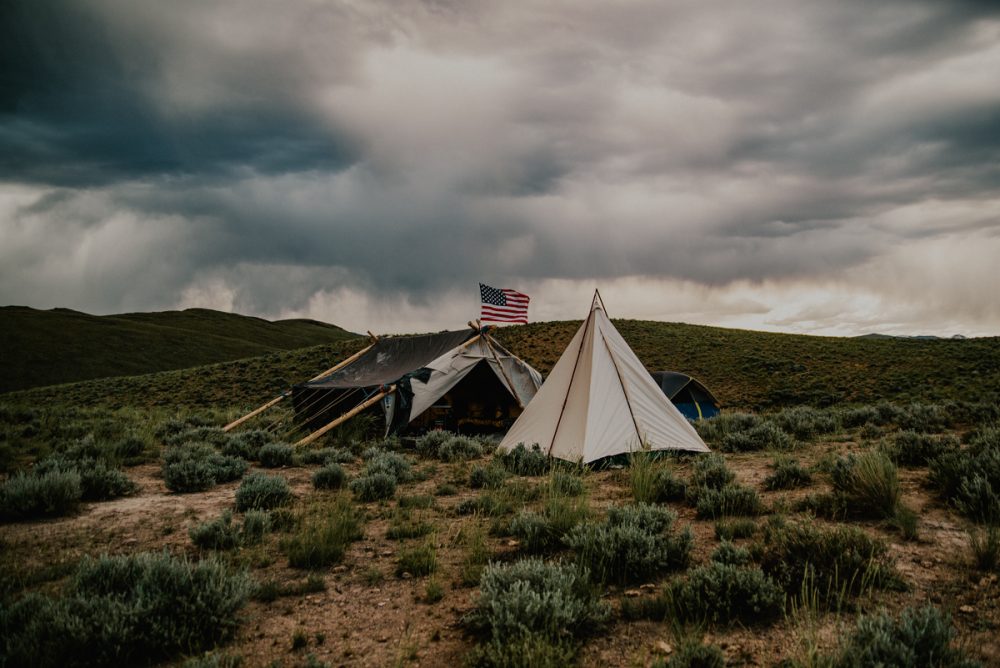
Just before re-entering the cook tent, one last look to the West gave me pause. It was the direction of the prevailing wind, and a massive gray-black cloud blocked the stars above the Ward’s Butte, near the top of our grazing range. An occasional silent flash of lightning from within confirmed the foreboding feel. It was late May, and in the continual wrestling match between spring and oncoming summer, even winter can come out swinging and get tangled in the brawl. I knew from experience that the ground could easily be blanketed with white by morning.
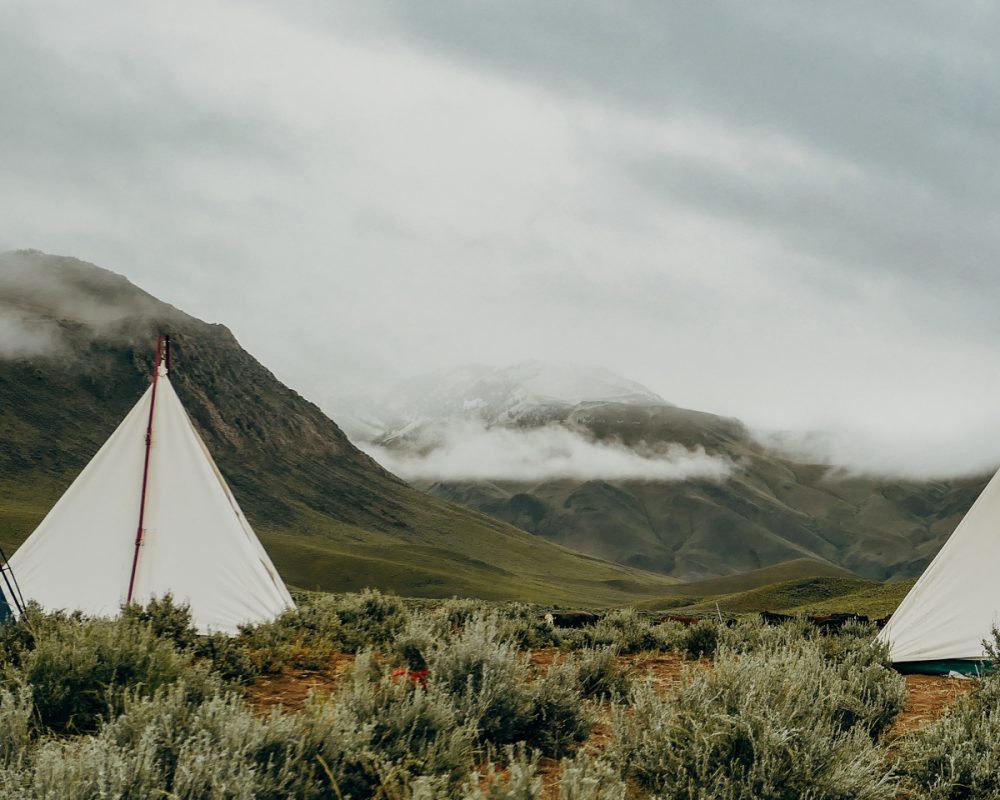
We had 3 range camp canvas tipis around the wall-tent cook shack, and one Eureka nylon backpacking tent. A gentle breeze caressed the canvas flaps as we cooked and ate our meals in silence by the light of the Coleman. With me were four other riders, most of whom were new to life on the range: Justin, from Cal-Poly; Mike, from Boston College; and Graham, from Washington State U and Jake, 3rd year returning rider and crew boss trainee, just back up to Idaho from an internship on the RA Brown Ranch in Texas.
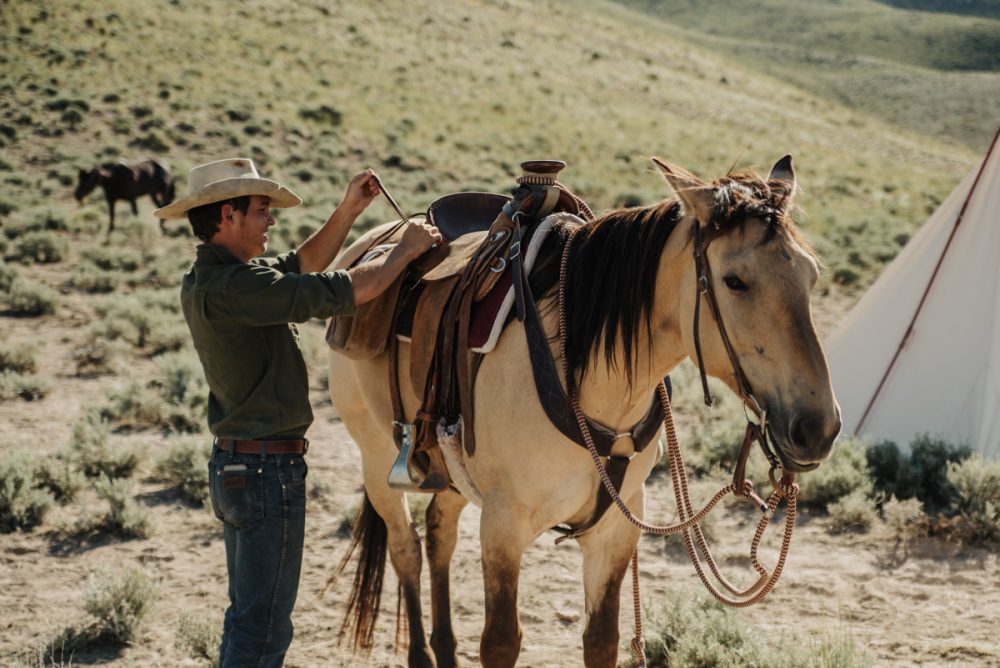
I smiled at them as they cleaned their dishes and got ready to turn in. The new riders were completely exhausted; it was after eleven PM. It was the first full range day out of 100 or more to come, and their first day in camp. They were still acclimating to altitude—and attitude. They’d all left universities in COVID tumult. And now (after our own two week quarantine), they had been thrust into the complete opposite—life completely cut off from civilization of any kind, living in an un-distanced community created from a common thread of work: to get cattle fed on a diversity of grasses while stewarding the 70 square miles of wild habitat we rode horseback on.
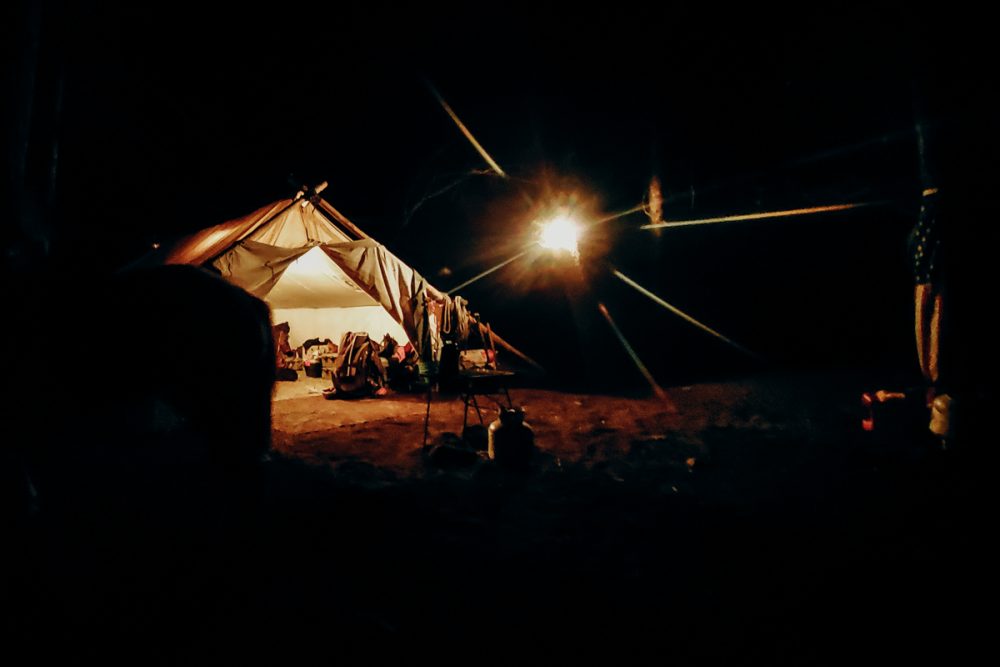
I think they were too tired to notice that there were not enough tents. The boss, that was me, didn’t have one. It was OK; I really didn’t care. One by one, I noted the lights on the walls of their tents flicker out and unrolled my own kit on some saddle pads on the dirt of the cookshack. I doused the lantern, and turned in.
It wasn’t more than an hour or so later that I woke up to the patter of rain on the canvas of the cook tent. I’m not a very sound sleeper, as I’ve often been startled awake by restless horses or cattle. And now, the rain came down harder, ushered by wind. The squall I spotted was upon us, and the canvas walls of the shack fairly shook under the unbroken blast of a cold williwaw wind, billowing downward from tens of thousands of feet in cumulus stacked high above ground level.
Williwaw brought hail, and stronger gale-force winds with it. The temperature plummeted by some 30 degrees, and cold leaked in through the tent-flaps as they shuddered in the storm. Steady as she goes, I hoped, snug in my bedroll. I could hear the faint and distant whinny of horses, locating each other in the driving pelt. The thunder echoed across the valley.
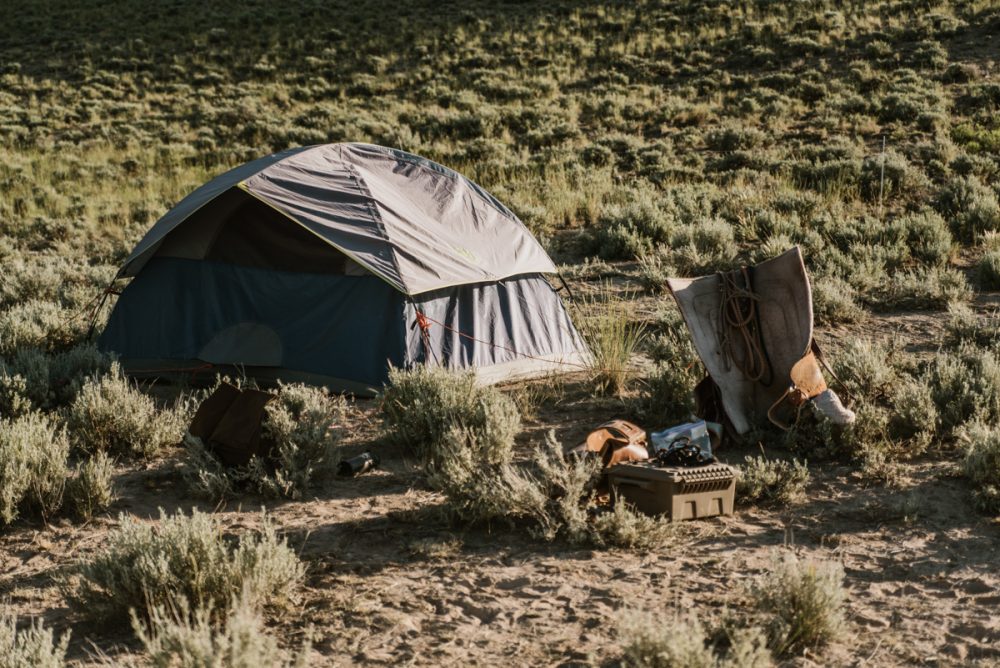
Humans held quiet at first. Then, Mike broke the silence. He was in the backpacking tent upwind of the cookshack. It looked more windproof than the others, as it was low to the ground and had a kind of streamlined-wind tunnel tested looking appearance. I couldn’t make out what he was saying at first, but then his voice started rising into a sort of shrill yell. I knew that it wasn’t good, because there was a string of expletives inappropriate for the printed page carried by the incessant and now fairly roaring wind as I heard the rip of nylon and the whipping of shredded tent that followed. So much for nylon over old-fashioned canvas.
I figured Mike would join me in the cookshack, but instead he persisted in attempting to salvage his bedding rights. As the squall continued over the next few minutes, occasional yelling of bad words carried through on the wind. I smiled, mostly because I had been through similar circumstances on the range. Then, I turned over, and reached into my pocket for the solution to such “things that go bang in the night.” Earplugs. A rider needed his sleep, after all. I’ve had stampedes of cattle scatter into the black, and horses break camp, and found after several such incidents that it is pure folly to go after them in the dark.
So, such was the night-time peril Mike had to endure. It was day one. I grinned, knowing that tomorrow, most likely, white would crust the mountaintops, and the wind, rain and spitting snow would likely continue (it did on both counts) and the new crew would learn the true meaning of bone-chilling cold. I’d tried to warn them, but you know; young people have a way of blowing the old man off. “He’s just flapping his gums again,” they say. I put my earplugs snugly in my ears, and left the black and blustery world of Nevada Camp behind me, come what may.
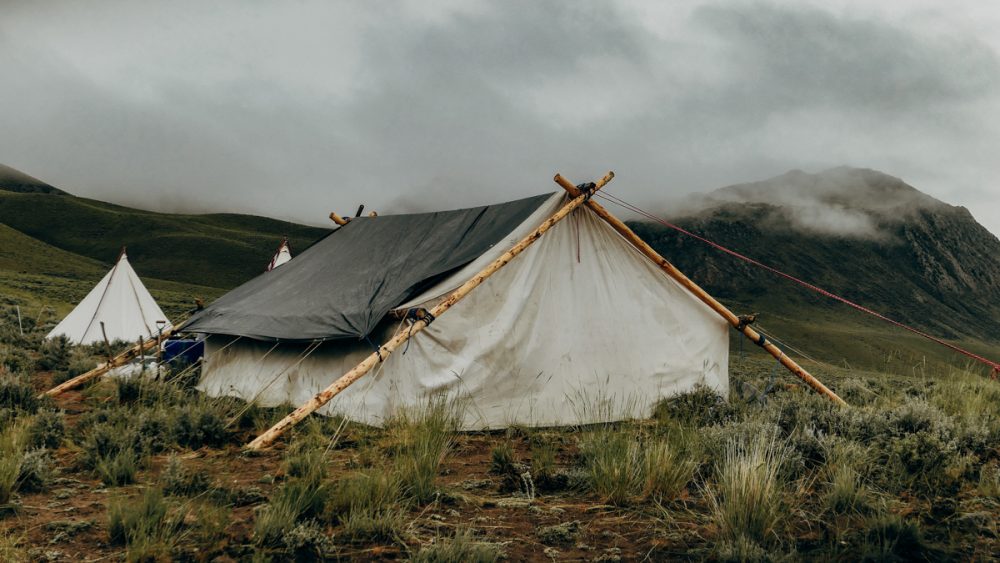
One thing that emerged early about Mike; he was tough. I thought some of his brushes with bucking horse, rattlesnake, dirt and dust, frying pan heat and finger-frozen cold would break him, but they didn’t. I think he just got stronger.
Fact is, I always end up learning a lot from Mike and the other young riders. Mike in particular because he was one of the most unfamiliar-to-this life range riders we’ve ever hired. Mike himself summed it up quite nicely as we rode horseback side by side on another much nicer day than the one I described above.
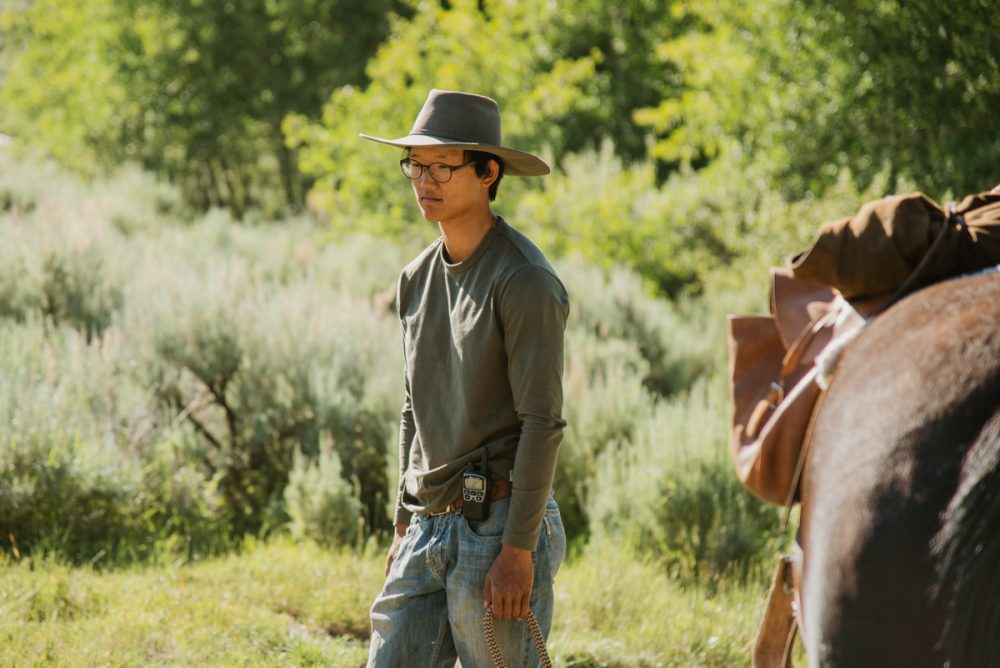
We were cresting a ridge on the Salmon River breaks with the herd, and Mike was mounted on Natalie, the quarter horse mare that he was finally figuring out how to partner with to do the work at hand. She had sort of a nasty habit of taking advantage of inexperience; threatening to buck and throwing her head were in her first bag of tricks. It surprised me that morning when I spotted him coaxing her counter to the flow along the flank of the herd—a method of stockmanship we had taught him a week ago in the corral that is highly counterintuitive for most new riders—and he was applying the technique not perfectly, but effectively to create movement.
Most new riders don’t ever get this.
But he had been paying attention. His natural athleticism and attempt to quietly understand the animals in his charge helped too. He and I stopped on the ridge, above the herd, eyeing the 70-mile view that spread out before us of the broad Pahsimeroi Valley and the snow-capped peaks of the Lost River Range beyond.
“So, Glenn. I think this is definitely a year of firsts.”
I turned away from the view, and toward Mike. His face was partly shaded by the edge of his wide-brimmed straw cowboy hat, set down low over his eyes. “How so?”
“I mean, there’s a lot of firsts for me, but I’m thinking that this is the first year that an Asian cowboy rode the ranges of the Pahsimeroi.” His smile was infectious.
His grin transferred to me. “Well, come to think about it, Mike, I’ll bet you’re right.” He was, of course, talking about none other than himself. His birth name was Hoyoung Lee (Mike was the name he gave to himself to make it easy for people to connect with him, I think). He was born in Seoul, South Korea. He was raised by his immigrant parents in the Bay Area and had never even been on a horse before a few weeks prior.
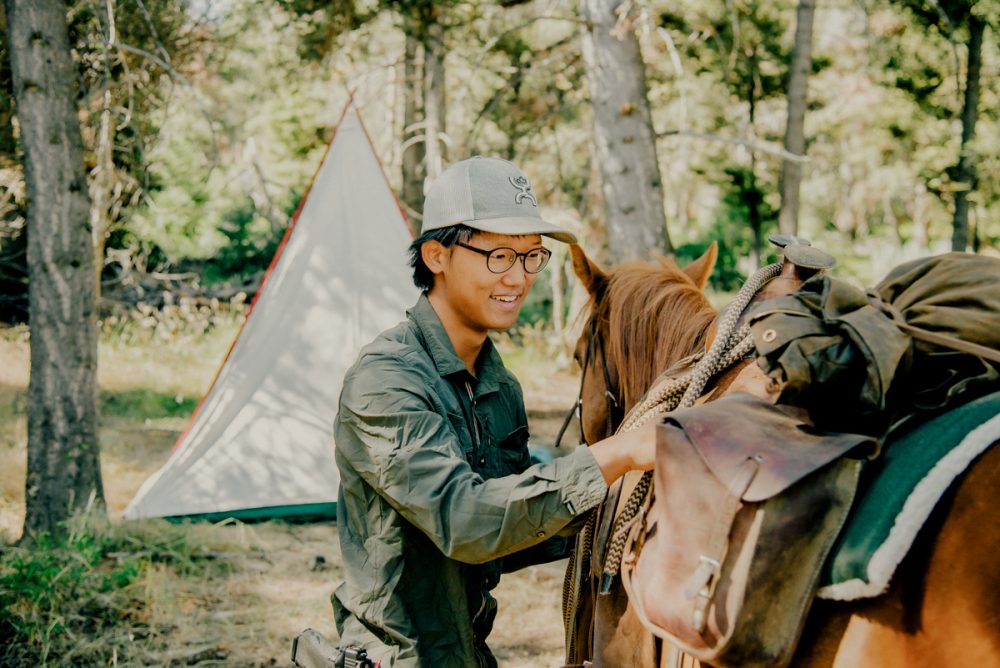
We hired him not for experience, but for his attitude. In the stress and sleeplessness that life in the saddle can bring, that one thing can make or break a crew. And besides, he was coming along quite nicely in his cowboy skill-set.
I was learning too. It could have been a culture clash—not so much Korean-American meets White Middle Aged Rancher, but urban meets cowboy.
But instead of a clash, it was a fascinating exchange of pop-urban-culture gen Z meets cowboy-rancher. And it was fun for both of us—and all of us, I think. And as the summer progressed, he transitioned from unfamiliar Mike to friend Hoyoung for everyone on the crew. We had become a sort of family in the hard work together; we lived with each other after all, in remote camps, sleeping on the ground, working on a common goal and vision, no matter what nature dished out.
We threw away that nylon backpacking tent. It was shredded beyond repair. And I think that with each of the range riders that come to Alderspring for a summer, a certain part of their own lives and person gets more than a little shredded by the razor sharp reality of life on the edge of nature. And they become people better for it.
And along the way this young generation receives and really begins to get the vision of stewardship and husbandry of wild landscapes and animals. And that’s imperative, as they are our only hope in an American demographic where the average age of an agricultural practitioner exceeds 57.
Because on the land we’ll find a future, for us, and our species, and they have it in their hands.
Happy Trails.
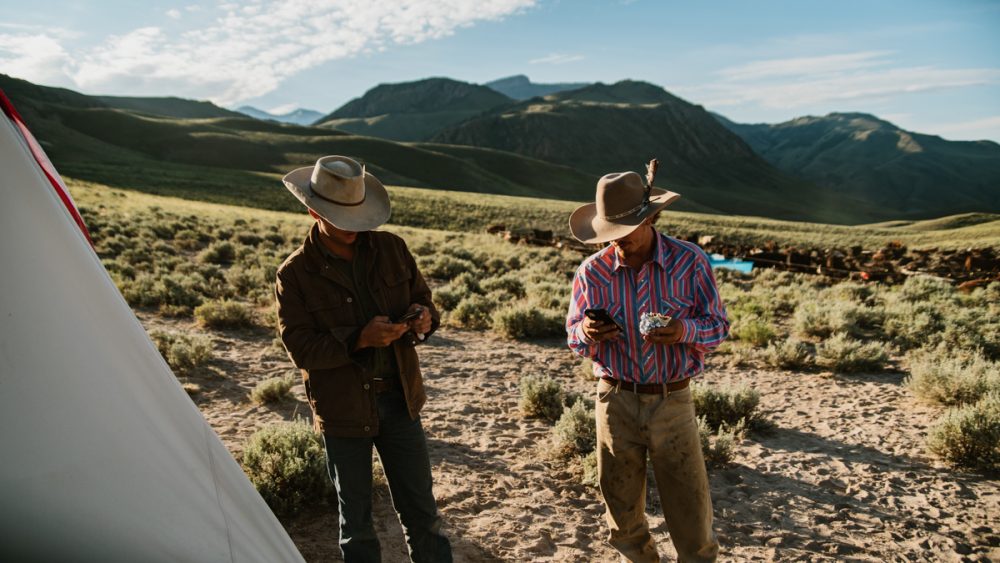




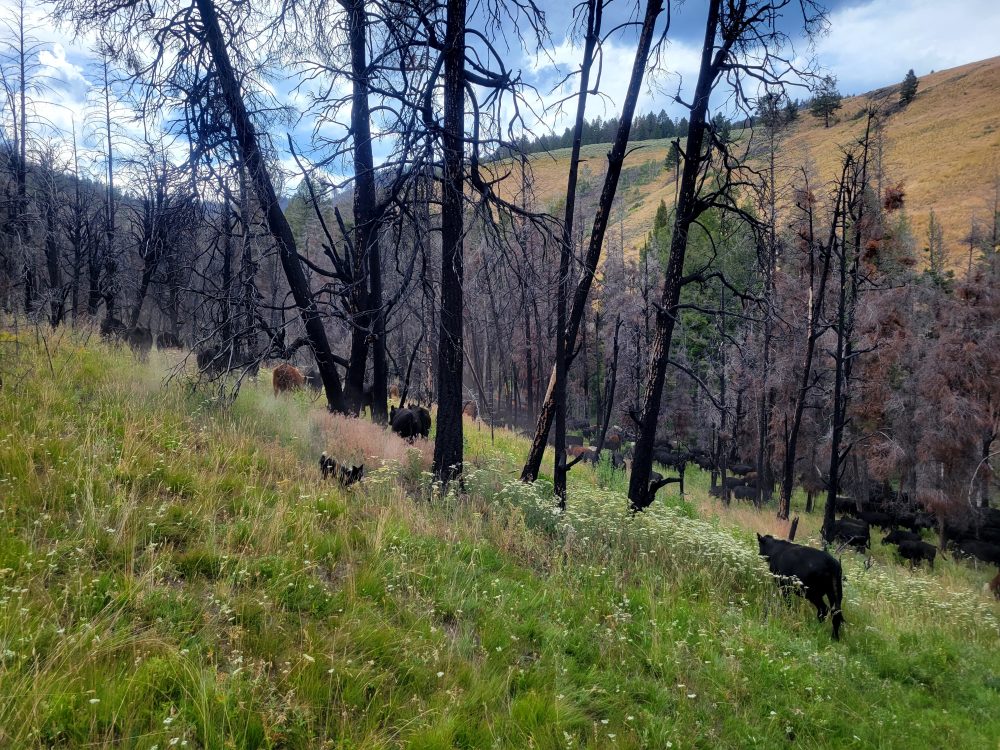

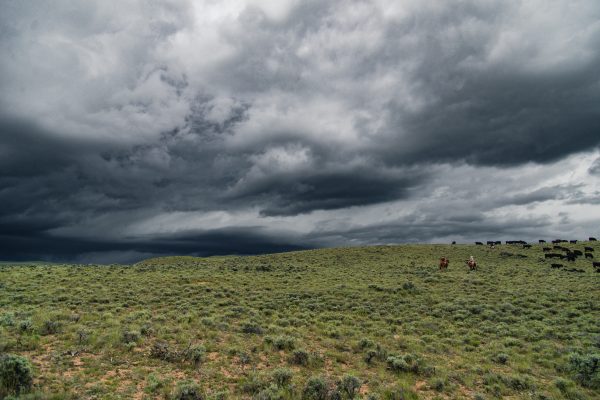
Linda Reyes
Thank You for EVERYTHING…from the amazing varied, QUALITY, products you make available to all of us, to the wonderful insight you bless us all with to the life you live and ride thru the process💟
The shipping from NC is steep…and I cut what ever corners I have to ..to be able to be blessed with especially the BEEF… oh my ..I’m salivating just thinking of those ribeyes🤣
Blessing and much appreciation and gratitude for all you do and who you are and what you become thrust the seasons of ranchingɉϬ
sandy collins
always a joy and inspiration to read!
Deborah
I really enjoy reading these short stories of the range, it’s just like reading a good book and I want to read more. I think it’s amazing that you do internships like this and it speaks volumes of how your ranch is run. Thank you for such enlightening chapters of life!